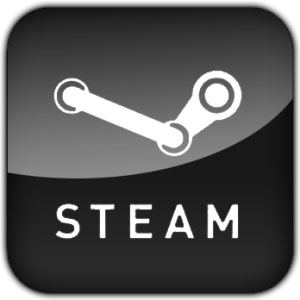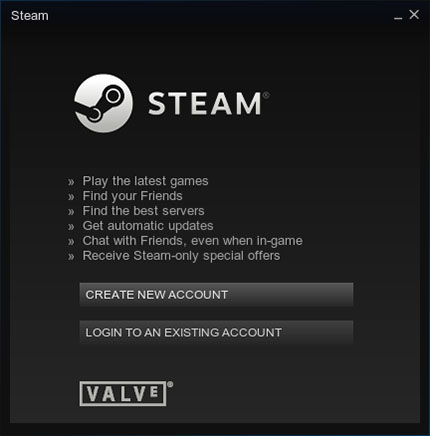How To Install Steam on Manjaro

In this tutorial, we will show you how to install Steam on Manjaro. Steam is one of the most popular digital distribution platforms for PC gaming, offering thousands of games from AAA titles to independent creations. For Linux users, particularly those running Manjaro Linux, installing Steam opens up an impressive world of gaming possibilities. Manjaro’s Arch-based infrastructure provides a solid foundation for gaming, and with the right setup, you can enjoy a smooth gaming experience comparable to other operating systems. This comprehensive guide will walk you through everything you need to know about installing Steam on Manjaro Linux, from prerequisites to post-installation optimization.
Prerequisites for Installing Steam on Manjaro
System Requirements
- At least a dual-core processor (quad-core recommended for modern games)
- Minimum 4GB RAM (8GB or more recommended for better performance)
- At least 5GB of free disk space (more needed for game installations)
- A dedicated graphics card with updated drivers (Intel integrated graphics may work for less demanding games)
Manjaro is relatively lightweight compared to other operating systems, but gaming requires substantial resources depending on the titles you plan to play.
Updating Your Manjaro System
It’s crucial to start with an updated system before installing any new software:
sudo pacman -SyuThis command synchronizes the package databases and updates your system packages to their latest versions. Updating ensures compatibility and reduces the risk of installation issues.
Enabling the Multilib Repository
- Open the pacman configuration file:
sudo nano /etc/pacman.conf - Find and uncomment (remove the # from) the multilib repository section:
[multilib] Include = /etc/pacman.d/mirrorlist - Save the file (Ctrl+O, then Enter) and exit (Ctrl+X)
- Update your system to incorporate the multilib repository:
sudo pacman -Syu
Driver Installation
Proper graphics drivers are essential for gaming performance:
For NVIDIA GPU users:
sudo pacman -S nvidia nvidia-utils lib32-nvidia-utilsFor AMD GPU users:
sudo pacman -S xf86-video-amdgpu vulkan-radeon lib32-vulkan-radeonFor Intel integrated graphics:
sudo pacman -S xf86-video-intel vulkan-intel lib32-vulkan-intelAlternatively, you can use Manjaro’s Hardware Configuration utility (mhwd) to automatically install the appropriate drivers:
sudo mhwd -a pci nonfree 0300Method 1: Installing Steam via Command Line
Using Pacman
- Open your terminal using the keyboard shortcut Ctrl+Alt+T or by searching for “Terminal” in the application menu.
- Install Steam with the following command:
sudo pacman -S steam - The system will ask for confirmation before proceeding with the installation. Type ‘Y’ and press Enter.
- During installation, you may be prompted to select providers for certain dependencies. Generally, it’s best to select the default options unless you have specific requirements.
The installation process typically takes a few minutes, depending on your internet speed. Once completed, Steam will be installed on your system and ready to launch.
Installation Options and Dependencies
When installing Steam via command line, you might encounter prompts regarding optional dependencies. It’s recommended to install all optional dependencies to ensure compatibility with a wide range of games. These dependencies often include:
- Controller support packages
- Audio libraries
- Additional graphics libraries
- Video codec libraries
Command Line Troubleshooting
If you encounter issues during installation:
- Check if the multilib repository is properly enabled
- Verify your internet connection
- Try clearing pacman’s cache with:
sudo pacman -Sc - If package conflicts occur, try:
sudo pacman -Syu --needed steam
Method 2: Installing Steam via GUI (Pamac)
Using Add/Remove Software
- Open the Manjaro application menu by clicking on the icon at the bottom left corner of your screen.
- Search for “Add/Remove Software” or “Pamac” and click to open it.
- Once the package manager opens, type “Steam” in the search bar at the top.
- From the search results, locate “Steam” or “Steam-Manjaro” and click on it.
- Click the “Install” button to begin the installation process.
- You’ll be prompted to enter your password for authentication. Enter it and proceed.
- When prompted about optional dependencies, it’s recommended to select all of them for optimal compatibility. Click “Choose” to continue.
- A dialog showing all the packages to be installed will appear. Review them and click “Apply” to start the installation.
- Wait for the installation to complete. You’ll see the progress and any messages in the package manager window.
Once the installation finishes, the “Install” button will change to “Remove” and “Reinstall,” indicating that Steam has been successfully installed on your system.
Post-Installation GUI Verification
- Look for the Steam icon in your application menu under “Games” or by searching for “Steam” in the application launcher.
- Click on the Steam icon to launch it. The first time you launch Steam, it may need to download updates.
- A Steam login window should appear, confirming that the installation was successful.
If Steam doesn’t appear in your application menu, try logging out and logging back in, as sometimes the desktop environment needs to update its application database.
Method 3: Installing Steam via Snap Store
Installing Snapd on Manjaro
- Install snapd using pacman:
sudo pacman -S snapd - Enable and start the snapd service:
sudo systemctl enable --now snapd.socket - Create a symbolic link for snap:
sudo ln -s /var/lib/snapd/snap /snap - Log out and log back in to ensure snap’s paths are updated.
Installing Steam as a Snap
- Open a terminal window.
- Install Steam using snap:
sudo snap install steam - Wait for the installation to complete. The system will display a confirmation message when finished.
Snap-Specific Configuration
When running Steam from a snap installation, you might need to address some permission-related issues:
sudo snap connect steam:home
sudo snap connect steam:joystick
sudo snap connect steam:hardware-observe
These commands ensure that Steam has the necessary permissions to function correctly in its containerized environment.
Method 4: Alternative Installation Options
Flatpak Installation
- Install Flatpak if not already installed:
sudo pacman -S flatpak - Add the Flathub repository:
flatpak remote-add --if-not-exists flathub https://flathub.org/repo/flathub.flatpakrepo - Install Steam via Flatpak:
flatpak install flathub com.valvesoftware.Steam - Launch Steam with:
flatpak run com.valvesoftware.Steam
Flatpak installations are contained within their own environment, which means they don’t interfere with system packages but might have some limitations regarding performance and system integration.
Pre-installed Steam
- Search for “Steam” in your application menu
- Try running
steamin a terminal window
If Steam is already installed, you can skip to the post-installation setup section.
Comparing Installation Methods
Pros and Cons Comparison
| Method | Pros | Cons |
|---|---|---|
| Pacman (CLI) | Direct system integration, better performance, full access to system libraries | May require manual updates, potential system conflicts |
| Pamac (GUI) | User-friendly, visual dependency management, easy to use | Same system integration concerns as CLI method |
| Snap | Self-contained, automatic updates, minimal system impact | May have performance overhead, permission limitations |
| Flatpak | Self-contained, better permissions model than Snap, compatibility guarantees | Larger disk space usage, potential performance overhead |
Recommended Method Based on User Experience Level
- Beginners: Pamac (GUI) installation offers the most straightforward experience
- Intermediate users: Pacman (CLI) provides a good balance of control and simplicity
- Advanced users: Choose based on your specific needs; CLI for performance, containerized solutions for isolation
Post-Installation Setup
First-Time Setup
- Launch Steam from your application menu or terminal
- Wait for the initial update to complete
- When prompted, log in with your existing Steam account or create a new one
- Accept the Steam subscriber agreement
- Allow Steam to complete its first-time setup process
During this process, Steam will configure its environment and prepare for game installations.

Steam Play Configuration
- Open Steam
- Click on “Steam” in the top-left corner
- Select “Settings”
- Navigate to “Steam Play” in the sidebar
- Check “Enable Steam Play for supported titles”
- For better compatibility (but potentially less stability), also check “Enable Steam Play for all other titles”
- From the dropdown menu, select the latest Proton version (or Proton Experimental for cutting-edge features)
- Click “OK” to save changes
This configuration allows you to install and play Windows-only games directly from your Steam library on Manjaro.
Game Library Management
- In Steam Settings, go to “Downloads”
- Click on “Steam Library Folders”
- Click “+” to add a new library location if needed
- Use the up/down arrows to set priority for game installations
- Click “OK” to save changes
When installing games, you can now select which library location to use, helping you manage your storage efficiently.
Optimizing Steam Gaming on Manjaro
Kernel Selection
- Open Manjaro Settings Manager
- Select “Kernel”
- For gaming, consider using:
- The latest kernel for newer hardware and features
- The LTS (Long Term Support) kernel for stability
- The Zen kernel for performance optimizations geared toward desktop usage
The optimal kernel depends on your hardware and requirements. For most gaming setups, the latest kernel typically provides the best performance with new hardware.
Performance Tweaks
- Install GameMode to optimize system performance during gaming:
sudo pacman -S gamemode lib32-gamemode - Launch games with GameMode automatically through Steam by adding this to the game’s launch options:
gamemoderun %command% - For AMD GPU users, consider installing CoreCtrl for GPU performance management:
sudo pacman -S corectrl - Enable Feral GameMode in Steam by adding this to the launch options:
LD_PRELOAD=/usr/lib/libgamemodeauto.so %command%
External Tools Integration
- Install Lutris for managing non-Steam games:
sudo pacman -S lutris - Add MangoHud for in-game performance monitoring:
sudo pacman -S mangohud lib32-mangohudAdd to Steam game launch options:
mangohud %command% - Install ProtonUp-Qt to manage custom Proton versions:
sudo pacman -S protonup-qt
These tools provide powerful extensions to your gaming setup, offering better compatibility, performance monitoring, and control over your gaming environment.
Troubleshooting Common Steam Issues on Manjaro
Launch Problems
- Try launching from terminal to see error messages:
steam - Reset Steam with:
steam --reset - If Steam crashes at startup, try removing the Steam configuration:
mv ~/.local/share/Steam ~/.local/share/Steam.old mv ~/.steam ~/.steam.old - For “no such file or directory” errors, install missing libraries:
sudo pacman -S lib32-nvidia-utils lib32-mesa
Game-Specific Issues
- Verify game files by right-clicking the game in Steam, selecting Properties, then Local Files, then Verify integrity of game files
- Try a different Proton version in the game properties (right-click the game > Properties > Compatibility)
- Check the ProtonDB website to see if other users have found solutions for your specific game
- Add these launch options for better compatibility:
PROTON_USE_WINED3D=1 %command%
Performance Issues
- Disable desktop effects while gaming
- Lower in-game graphics settings
- Try using a different Proton version
- Make sure your system isn’t overheating (install
psensorto monitor temperatures) - Close background applications that might be consuming resources
Advanced Steam Configuration
Steam Launch Options
Add these parameters to Steam’s desktop shortcut or launcher for specific behaviors:
- For better debugging information:
steam -console - To skip auto-updates on launch:
steam -noverifyfiles - For improved performance on some systems:
MESA_GLTHREAD=true steam
Custom Proton Versions
- Install ProtonUp-Qt:
sudo pacman -S protonup-qt - Launch ProtonUp-Qt and install Proton-GE
- In Steam, select the newly installed Proton-GE version in the game’s compatibility settings
Steam Deck Compatibility Mode
- In Steam, go to Settings > Interface
- Check “Display Steam Deck compatibility category icons in my library”
- Games will now show their compatibility status with the Steam Deck, which is also a good indicator of Linux compatibility
Uninstalling Steam
Clean Removal Process
For pacman installations:
sudo pacman -Rs steamFor snap installations:
sudo snap remove steamFor Flatpak installations:
flatpak uninstall com.valvesoftware.SteamPreserving Game Data
- Navigate to
~/.local/share/Steam/userdata/ - Copy this directory to a backup location
- Alternatively, use Steam Cloud for games that support it by ensuring it’s enabled in the game properties
This ensures you won’t lose your progress if you reinstall Steam in the future.
Congratulations! You have successfully installed Steam. Thanks for using this tutorial for installing the Steam on Manjaro Linux system. For additional help or useful information, we recommend you check the official Steam website.